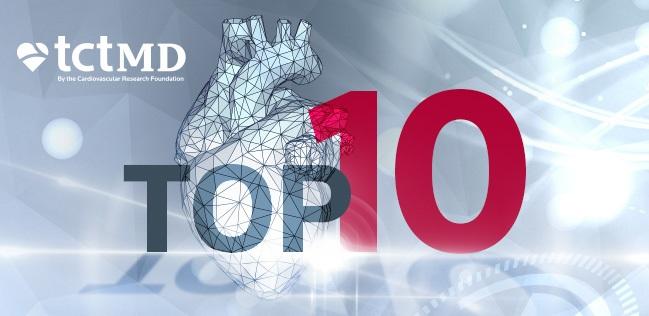TCTMD’s Top 10 Most Popular Stories for November 2017
The ORBITA study was the hands-down winner for top story this month, but our story on the new hypertension guidelines was also a top contender.

The ORBITA study, presented at TCT 2017, was the hands-down winner for top story in November, but the new hypertension guidelines, released just a week and a half later at the American Heart Association (AHA) 2017 Scientific Sessions, also were a top contender. Other big studies from both meetings round out the list, including DAPT-STEMI and REDUCE, FAME 2 at 3 years, and CULPRIT-SHOCK
ORBITA: PCI Offers No Symptom Improvement Over Sham Procedure
The intriguing study, which hinted at a placebo effect of PCI, left physicians debating the merits of revascularization in stable coronary artery disease.
Long-Awaited Hypertension Guidelines Released at AHA
The treatment goal has been lowered, and a new classification expands the number of US adults considered to have hypertension.
Shortened DAPT Durations Appear Safe for Patients With ACS Implanted With DES
DAPT-STEMI and REDUCE found 3 and 6 months of DAPT, respectively, were noninferior to the standard 12 months of treatment.
FAME 2 at 3 Years: Outcomes, Symptoms Better With PCI vs OMT in Stable CAD, at Similar Cost
The study found strikingly fewer urgent revascularizations and numerically fewer deaths and MIs in the PCI group when fractional flow reserve was gatekeeper.
CULPRIT-SHOCK Disputes Benefit of Immediate Multivessel PCI in Patients With Cardiogenic Shock
The results, which challenge current guidelines and appropriate use criteria, will change practice, several experts agreed.
Long-term Absorb BVS Data Continue to Disappoint
While two analyses suggest the thrombotic risk can be mitigated, others say the data are “frustrating” in that there’s still not even a hint of benefit.
DES With Bioresorbable Polymer Outperforms BMS in SENIOR Patients
A chorus of interventionalists all agreed that BMS have an extremely limited role, if any, in clinical practice following results of several studies.
RECAP: In the Cath Lab, a Lead-free Pad Placed on the Patient Cuts Operator Radiation Exposure
This is an important, rigorously conducted study in an area that is sorely in need of good data, Sunil Rao says.
Longer-term Outcomes of Watchman Reassure as Debate Continues Over How It Should Be Used
Lingering questions about the potential for residual ischemic stroke risk with the LAA closure device temper enthusiasm for its use.
Features and Opinion
Beyond the news, there was plenty of noteworthy editorial content in other sections of the site.
FEATURE: Trajectory Unknown: How ORBITA Lands in Clinical Practice Still Up for Debate
OPINION: My Takeaways From TCT 2017: Show Up, Keep It Civil, and Bring Your Best Self
VIDEO: On Record: All Eyes on ORBITA
FEATURE: Conference Organizers, Physicians Wary as Direct Industry Sponsorship Winds Down in Europe
Shelley Wood was the Editor-in-Chief of TCTMD and the Editorial Director at the Cardiovascular Research Foundation (CRF) from October 2015…
Read Full Bio

Oscar Berg